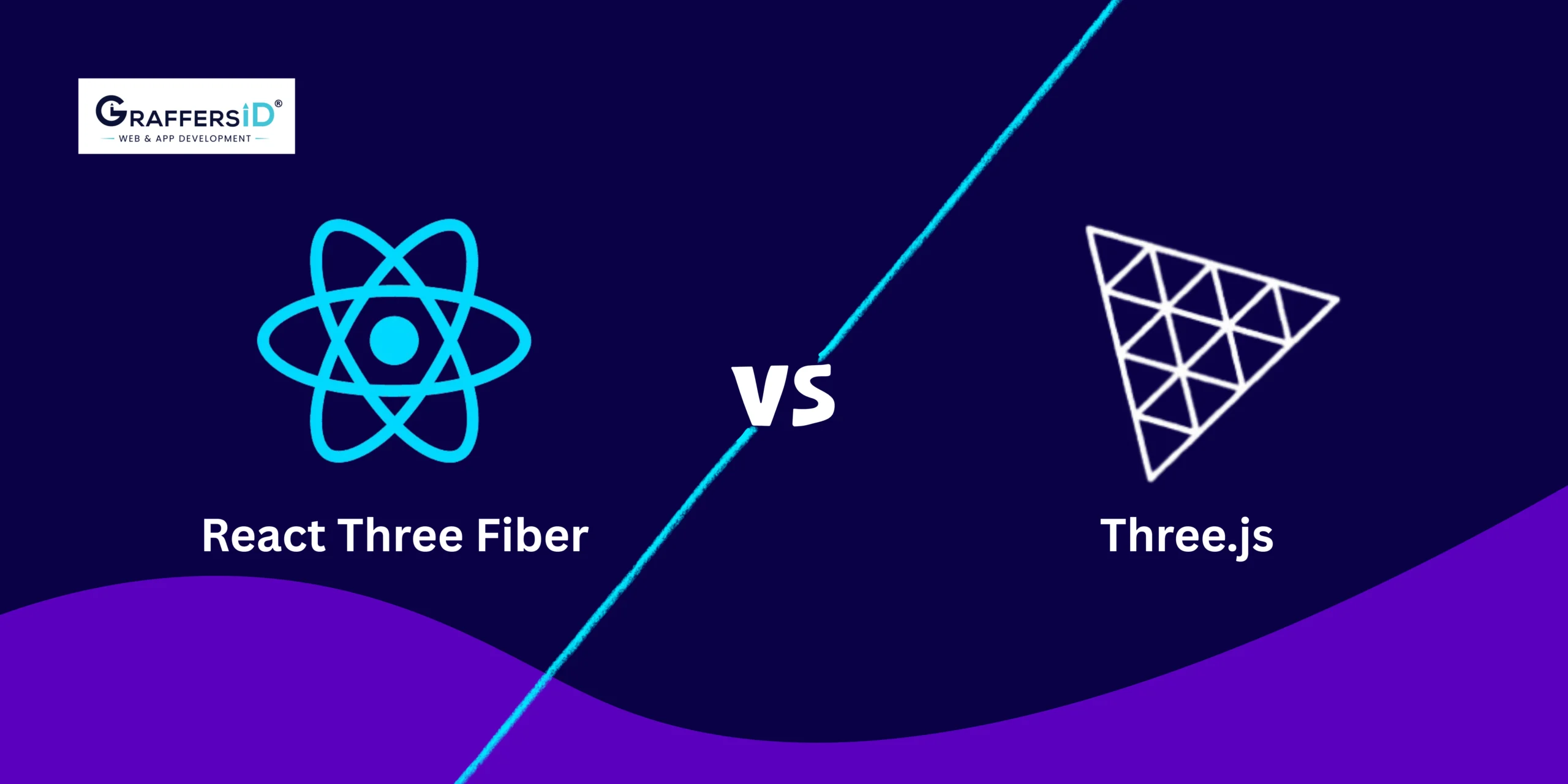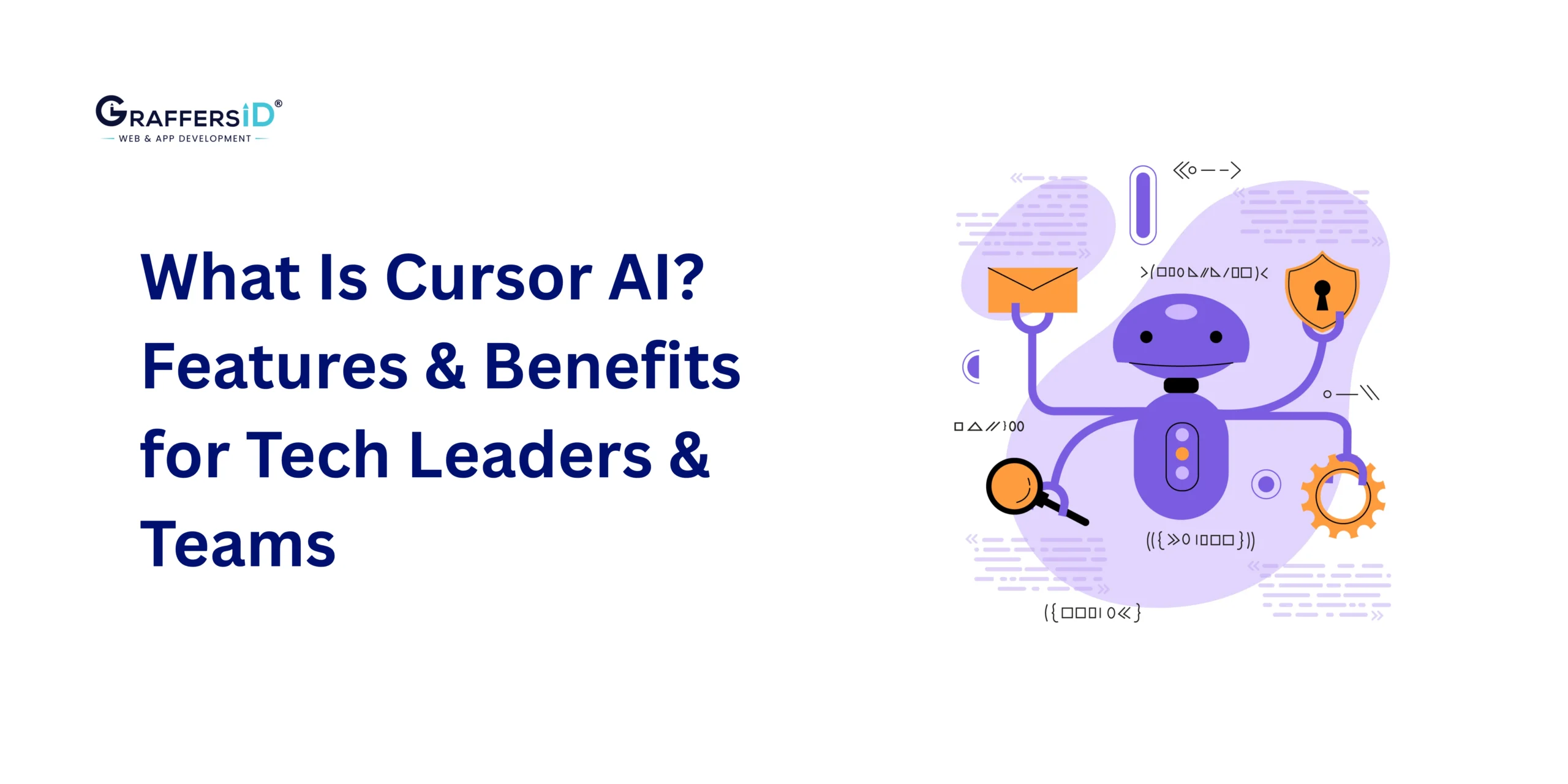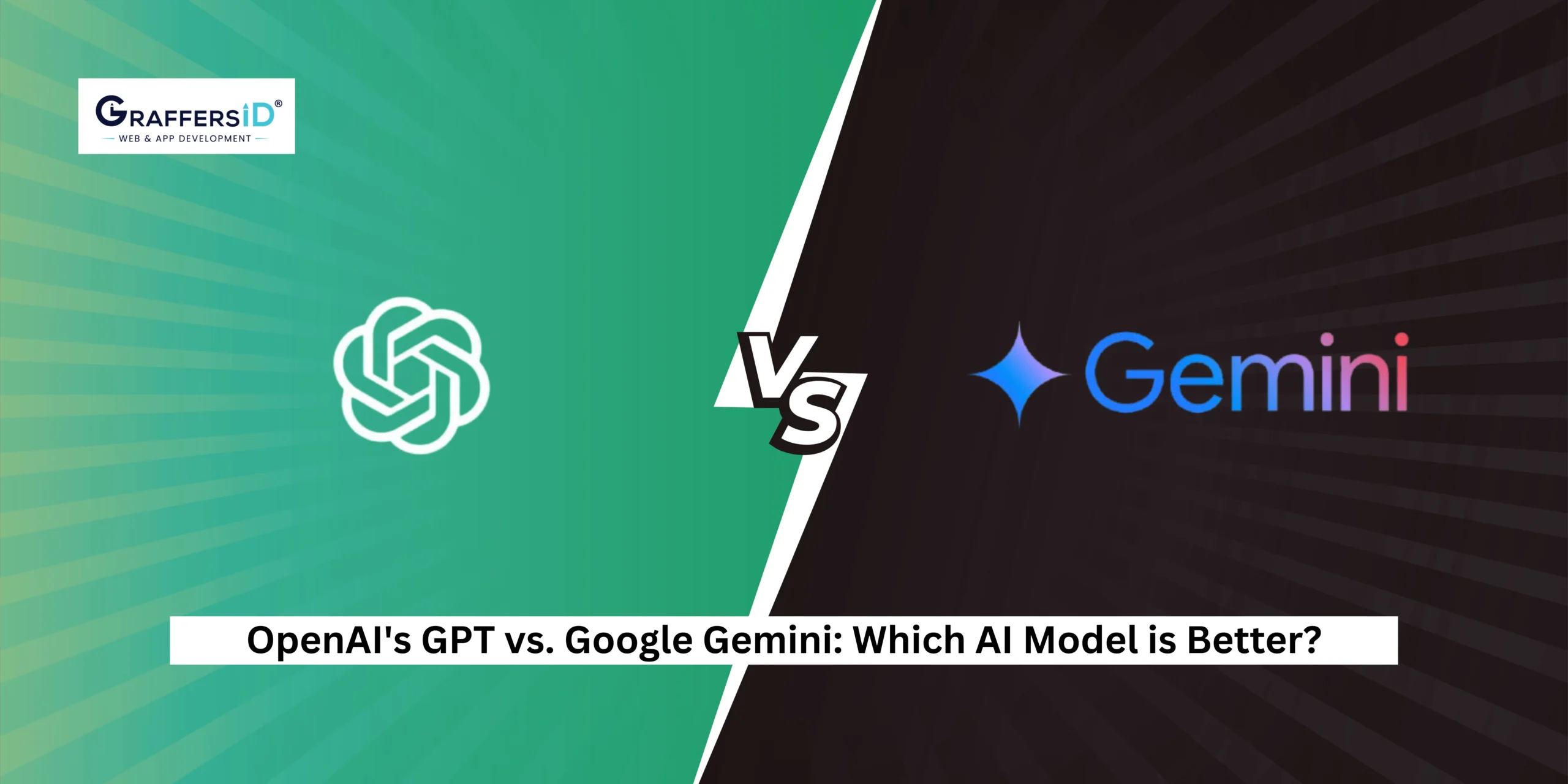In recent years, 3D web development has developed rapidly, allowing developers to build dynamic, engaging user experiences directly in the browser. Two of the most popular libraries in 2025 are React Three Fiber (R3F) and Three.js. Although they are both based on WebGL, their approaches and needs as developers differ.
This article provides a detailed comparison between React Three Fiber vs. Three.js to help you make the right choice based on performance, flexibility, ease of use, and project suitability.
What is Three.js?
![]()
Three.js is a powerful JavaScript library for WebGL applications. It offers a reliable, low-level API for building complex 3D scenes, animations, and interactions.
Pros of Three.js
- Low-level Control: Three.js gives you fine-grained control over every aspect of your 3D scene. This makes it suitable for complex 3D applications where you need to manage every detail.
- High Performance: Since Three.js works directly with WebGL, it offers excellent performance at maximum speed for rendering 3D graphics.
- Large Community: Three.js has a large and active community of developers, which means you can find extensive documentation, tutorials, and third-party extensions.
- Versatility: Used in various fields, like simulations, AR/VR, gaming, product visualization, etc.
- Cross-platform Rendering: Supports rendering across multiple platforms, including desktop, mobile, and VR/AR devices. With WebXR support, Three.js can create immersive VR/AR experiences directly in the browser.
- Standalone: Works independently of any frontend framework. You can use it with plain JavaScript or integrate it manually with frameworks like React, Angular, or Vue.
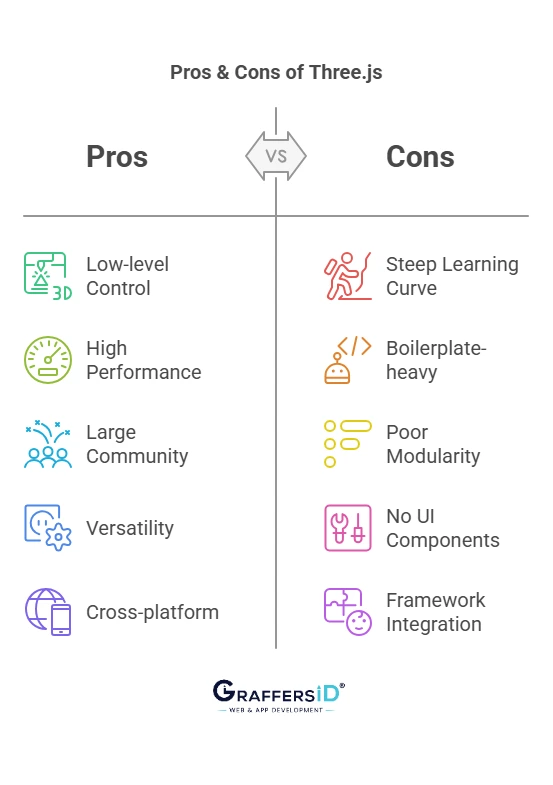
Cons of Three.js
- Steep Learning Curve: Three.js can be challenging to learn, especially for those who are new to 3D graphics or WebGL. It requires a solid understanding of mathematics and computer graphics concepts.
- Boilerplate-heavy: Setting up even a basic scene requires multiple lines of code to create a camera, renderer, geometry, material, lighting, and animations.
- Poor Code Modularity: Since Three.js uses an imperative approach, code tends to grow complex quickly and becomes difficult to refactor into reusable modules.
- No Built-in UI Components: Three.js primarily focuses on graphics, so it lacks built-in user interface components. Developers need to integrate additional libraries or create custom UI elements separately.
-
Hard to Integrate with Frameworks: Manually syncing Three.js’ render cycle with React or Angular’s component lifecycle can lead to performance and synchronization issues.
Read More: Difference Between ReactJS and React Native
What is React Three Fiber (R3F)?
![]()
React Three Fiber is a React renderer for Three.js. It allows you to create 3D scenes with React paradigms like JSX, hooks, and components. React Three Fiber abstracts many of the complexities of Three.js, making it more accessible to web developers who are already comfortable with React.
Pros of React Three Fiber
- React Integration: React Three Fiber smoothly integrates with React, using the component-based architecture and making it accessible to developers already familiar with React.
- Declarative Syntax: The library promotes a declarative approach to 3D scene creation, which makes the code more readable and easier to maintain with JSX.
- Faster Development: Similar to React, React Three Fiber encourages component reuse, allowing you to build complex 3D scenes by using smaller components, hot reloading, reusability, and React DevTools integration.
- Easier Learning Curve: Compared to Three.js, React Three Fiber has a gentler learning curve, especially for developers already experienced with React.

Cons of React Three Fiber
-
Requires Dual Expertise: Developers need to learn both the Three.js rendering pipeline, shaders, and camera manipulation, as well as the React concepts like hooks, lifecycle, and state.
- Abstraction Complexity: R3F abstracts some complexities of Three.js, which may restrict the ability to perform low-level optimizations. You may need to break out of the abstraction for advanced use cases.
-
React-only: You can only use R3F within React applications. This limits flexibility if you are using Angular, Vue, or vanilla JS.
- Smaller Community: While React Three Fiber has gained popularity, its community is not as extensive as Three.js, which means there may be fewer resources and third-party plugins available.
React Three Fiber vs Three.js: Full Comparison Table
| Feature | React Three Fiber (R3F) | Three.js |
|---|---|---|
| Approach | Declarative (React JSX syntax) | Imperative (manual object creation and scene management) |
| Learning Curve | Easier for React developers | Steeper, especially for beginners |
| Framework Dependency | Requires React | Independent, framework-agnostic |
| Performance | Optimized via React 18 features | Maximum performance |
| Code Readability | High (component-based, clean JSX) | Low to medium (verbose and nested code) |
| Community & Ecosystem | Growing (built around React tools like Drei, Zustand, Leva) | Large, mature (decade-old ecosystem with extensive plugins) |
| 3D Scene Setup Speed | Fast, due to abstraction and reusable components | Slower, requires more boilerplate |
| Customization/Low-level Access | Limited (though useThree and custom shaders are possible) | Full control over WebGL and the rendering pipeline |
| Tooling Support | Integrated with React DevTools, works well with Vite/Next.js | Separate debugging tools are needed |
| Use Cases | Interactive portfolios, product configurators, and dashboards | Games, simulations, VR/AR apps, heavy-duty rendering |
| Best For | Teams already using React or needing fast 3D UI prototyping | Developers needing custom rendering logic or cross-platform apps |
Choosing between React Three Fiber and Three.js ultimately depends on your project’s requirements and your team’s familiarity with the technologies. Three.js offers maximum control and performance but comes with a steeper learning curve and more code verbosity. React Three Fiber, on the other hand, provides a smoother transition for React developers, promotes code modularity, and is well-suited for rapid prototyping and team collaboration.
When to Use Three.js?
Three.js is the right choice for you if:
- You Need Maximum Control: If you require fine-grained control over your 3D graphics and want to work directly with WebGL, Three.js is a better option. It’s ideal for complex 3D applications and games.
- Performance is Crucial: When performance is a top priority, especially for rendering complex scenes or animations, Three.js, with its direct WebGL integration, offers the best performance.
- WebGL Knowledge: If you have a solid understanding of WebGL and want to leverage that knowledge, Three.js provides a more direct interface to the underlying technology.

When to Use React Three Fiber?
React Three Fiber is the right choice for you if:
- React Familiarity: If you are already proficient with React and want to create 3D web applications without a steep learning curve, React Three Fiber is an excellent choice. It uses your existing React skills.
- Rapid Prototyping: For projects where speed is essential, React Three Fiber’s declarative approach and component reusability can help you prototype and develop 3D scenes quickly.
- Team Collaboration: If your development team includes both React and Three.js experts, React Three Fiber can be a bridge, allowing both teams to collaborate effectively.
Read More: Most Popular Backend Languages in 2025
What’s New in 2025?
Three.js:
- WebGPU integration: Experimental support for the WebGPU rendering pipeline (replacing WebGL for better performance).
- GLTF loader improvements: Draco and KTX2 compression improve load time and quality.
- Modular builds: Smaller bundles by tree-shaking unused features.
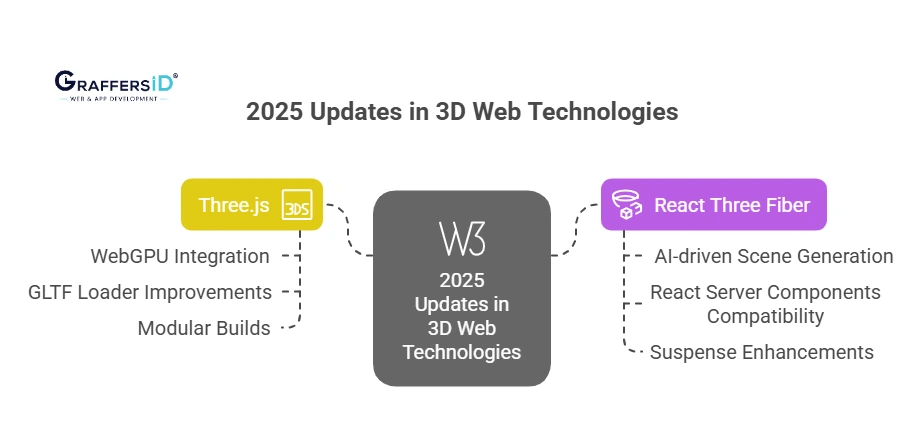
React Three Fiber:
- AI-driven Scene Generation:
react-three-aidevelopers to generate JSX-based scenes from natural language prompts. - React Server Components Compatibility: Better support for server-side rendering of 3D scenes.
- Suspense Enhancements: Improved async loading of 3D models with fallbacks and error boundaries.
Conclusion
Both React Three Fiber and Three.js are strong, but they have different ideal use cases. Select Three.js if you want low-level control and raw power. For integration, reusability, and modularity in React apps, go with React Three Fiber.
Each has benefits and drawbacks, and your choice should be based on your project goals, team capabilities, and performance requirements. Whichever library you use, both will allow you to access all aspects of 3D web development while building interactive and engaging web apps.
Irrespective of your choice, the right team can transform your idea into an interactive artwork. GraffersID helps startups and businesses in hiring the best remote React.js developers having practical experience in WebGL, 3D development, and building interactive user interfaces.
